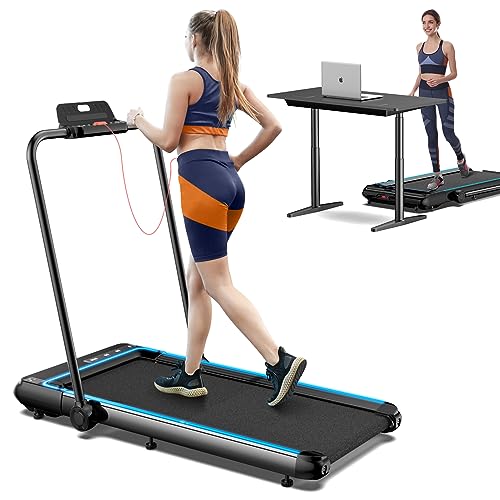Where To Research Gym Treadmill Online
Treadmills: A Comprehensive Guide to Understanding Their Functionality, Benefits, and Appropriate Selection
Introduction
Treadmills have actually become a staple in modern physical fitness routines, both in homes and gyms worldwide. They provide a practical and effective method to maintain cardiovascular health, increase endurance, and help in weight management. This short article explores the various types of treadmills, their benefits, features to think about when purchasing, and some FAQs to guide users in making notified decisions.
Types of Treadmills
When it pertains to choosing a treadmill, it is important to understand the different types readily available in the market. Here are the primary categories:
1. Handbook Treadmills
- System: These treadmills have a simple style and count on the user's efforts to move the belt.
- Pros: More cost effective, quieter operation, no electrical energy needed.
- Cons: Limited features, might not offer the very same variety of exercise intensity.
2. Motorized Treadmills
- Mechanism: Powered by a motor that drives the belt, enabling users to walk or run at a set pace.
- Pros: Greater range of speeds and slopes, geared up with various functions such as heart rate monitors and exercise programs.
- Cons: More pricey and might require more maintenance.
3. Folding Treadmills
- System: Designed for those with minimal area, these treadmills can be folded for simple storage.
- Pros: Space-saving, often motorized, flexible features.
- Cons: May be less long lasting than non-folding designs.
4. Industrial Treadmills
- Mechanism: High-quality machines created for usage in gyms and gym.
- Pros: Built to endure heavy usage, advanced features, typically include guarantees.
- Cons: Pricey and not ideal for home use due to size.
5. Curved Treadmills
- Mechanism: A special design that permits users to move the belt using their own energy.
- Pros: Offers a more natural running experience, promotes better running kind.
- Cons: More costly and can be noisier.
Treadmill Type
Pros
Cons
Handbook
Affordable, no electricity required
Limited features
Motorized
Range of speeds, advanced features
Maintenance required
Folding
Space-saving, typically motorized
May do not have durability
Business
Developed to last, professional-grade functions
Expensive
Curved
Natural running experience, promotes great type
Greater cost
Benefits of Using Treadmills
Treadmills use numerous benefits that can contribute to one's general health and fitness objectives. Some of these benefits consist of:
- Convenient Workouts: Treadmills allow users to exercise indoors no matter climate condition.
- Cardiovascular Health: Regular use can enhance heart health by increasing stamina and promoting healthy flow.
- Weight Management: Effective for burning calories, which helps in weight-loss and management.
- Adjustable Workouts: Users can control speed, slope, and duration to produce personalized workout experiences.
- Safety: Treadmills provide a predictable surface area, decreasing the risk of falls compared to outdoor running.
- Multifunctional: Many treadmills included functions like heart rate monitors, workout programs, and even entertainment systems.
Selecting the Right T read mill
When selecting a treadmill, possible purchasers should think about a number of essential elements:
Features to Consider:
- Motor Power: Typically measured in horse power (HP), a motor strength of a minimum of 2.5 HP is advised for serious runners.
- Belt Size: A longer and larger belt accommodates numerous stride lengths, offering comfort throughout exercises.
- Incline Settings: Adjustable incline functions imitate outside hill running and can increase workout strength.
- Weight Capacity: Ensure the treadmill can support the user's weight for safety and longevity.
- Console Features: Look for easy to use control panels, exercise programs, and Bluetooth compatibility for streaming music or other functions.
Spending plan Considerations
- Under ₤ 500: Entry-level manual treadmills ideal for casual walkers.
- ₤ 500 – ₤ 1,500: Mid-range motorized treadmills that offer more features and better toughness.
- ₤ 1,500 – ₤ 3,000: High-end designs with sophisticated innovation, bigger motors, and longer service warranties.
- Over ₤ 3,000: Commercial-grade treadmills perfect for frequent use in fitness centers or training facilities.
Regularly Asked Questions (FAQs)
1. How often should I utilize a treadmill?
It is suggested to utilize a treadmill a minimum of three to five times a week, including different intensity levels for best outcomes.
2. Can I drop weight by using a treadmill?
Yes, constant use of a treadmill can add to weight reduction, particularly when integrated with a well balanced diet plan and strength training.
3. What is the best speed to walk on a treadmill for beginners?
A speed of 3 to 4 miles per hour is an ideal range for novices. It's important to start sluggish and slowly increase rate as comfort and endurance improve.
4. Do I need to use a treadmill if I currently run outdoors?
Utilizing a treadmill can provide fringe benefits, such as regulated environments and differed workouts (incline, periods) that are not always possible outdoors.
5. How do I keep my treadmill?
Regular maintenance includes lubing the belt, cleaning up the deck and console, and examining the motor for ideal performance.
Treadmills are important tools for those wanting to improve their physical fitness levels in a regulated and convenient manner. With different types offered, understanding their functions and advantages is essential for making a notified purchase. By thinking about personal exercise needs, space accessibility, and spending plan restraints, people can discover the most suitable treadmill that fits their lifestyle. Integrating treadmill exercises into a well balanced fitness routine can cause improved health results and a pleasurable exercise experience.
